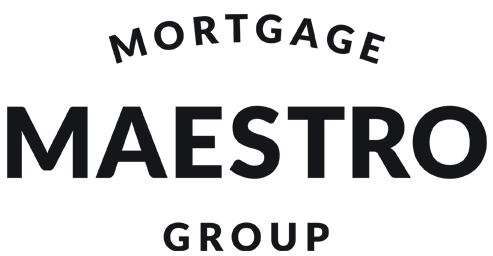Bank statement loans are actually easier to get than most people think. Here’s what you need to know about qualifying in 2025.
If you’re self-employed or have irregular income, you’ve probably wondered if bank statement loans are hard to get. The short answer? They’re not as difficult as you might expect. In fact, bank statement loans have easier requirements than many other types of loans.
Let’s break down exactly what it takes to get approved and why these loans might be your best path to homeownership.
The Reality About Bank Statement Loan Difficulty
Bank statement loans are designed specifically for people who can’t get traditional mortgages. While they do have requirements, they’re built to be more flexible than conventional loans.
Here’s the truth: the process takes slightly longer (30-45 days) than conventional loans due to the manual underwriting required for analyzing deposit patterns. However, many borrowers find the process moves more efficiently than with conventional loans. Since there’s less back-and-forth about tax documents, employment verification, and income calculations, approvals often come through faster.
Credit Score Requirements: Not as High as You Think
One of the biggest myths about bank statement loans is that you need perfect credit. That’s simply not true.
Current Credit Score Requirements for 2025:
- Minimum credit score: 620-640 (some lenders go as low as 580)
- Better terms available: 680+ credit scores qualify for improved rates
- Best rates: 700+ credit scores get the most favorable terms
You can qualify for a bank statement loan with a credit score as low as 620, but 700 or higher gets you a better rate and terms. Compare this to conventional loans that also require 620+ credit scores, and you’ll see bank statement loans aren’t actually harder to qualify for credit-wise.
Down Payment Requirements: What to Expect
Down payments for bank statement loans are higher than conventional loans, but they’re not unreasonable:
2025 Down Payment Guidelines:
- Minimum: 10% down with excellent credit (720+)
- Standard: 15-20% down payment required
- Lower credit scores: May need 25-30% down
You must have at least 10% down (90% loan to value, w/ a 720+ credit score). You must have at least 15% down (85% loan to value w/ a 680+ credit score). You must have at least 20% down (80% loan to value w/ a 660+ credit score). You must have at least 30% down (70% loan to value w/ a 620+ credit score).
While these requirements are higher than the 3% down available with conventional loans, they’re reasonable considering the flexible income requirements.
Income Verification: Actually Simpler
The income verification process is where bank statement loans shine. Instead of jumping through hoops to prove your income with tax returns and pay stubs, you simply provide bank statements.
What Lenders Look For:
- Consistent monthly deposits
- Average income calculation over 12-24 months
- Stable cash flow patterns
- Reasonable debt-to-income ratio (usually 45% or less)
Lenders typically use 50-75% of your average monthly deposits over 12-24 months to determine your qualifying income. This method often shows your true earning potential better than tax returns.
Who Gets Approved Easily?
Certain types of borrowers find bank statement loans particularly accessible:
Best Candidates:
- Business owners with 2+ years in business
- Real estate agents and brokers
- Independent contractors
- Freelancers with consistent clients
- Commission-based sales professionals
- Restaurant owners
- Construction contractors
If you fall into any of these categories and have decent credit with some money saved for a down payment, approval is very achievable.
Common Approval Challenges (And How to Avoid Them)
While bank statement loans aren’t hard to get, there are some common stumbling blocks:
Banking Red Flags:
- Irregular deposit patterns
- Large, unexplained deposits
- Frequent overdrafts
- Mixing personal and business funds
How to Improve Your Chances:
- Maintain consistent banking patterns for 6+ months before applying
- Keep personal and business accounts separate
- Avoid large, unusual transactions
- Build up cash reserves
- Your banking habits can actually affect your loan approval more than you realize
Interest Rates: The Trade-Off
Bank statement loans do come with higher interest rates than conventional loans. As of May 2025, the average 30-year fixed conventional mortgage rate stands at 7.018% with a FICO score of 780, so you can expect bank statement loan rates between 7.5% and 9%.
Bank statement loans typically come with interest rates that are 0.5% to 2% higher than conventional mortgages. While this means higher monthly payments, many borrowers find the trade-off worth it for the flexibility.
The Application Process: Step by Step
Getting a bank statement loan involves these straightforward steps:
Step 1: Prepare Your Documents
- Gather 12-24 months of bank statements
- Organize business documentation
- Check your credit score
- Calculate your down payment
Step 2: Find the Right Lender Not all lenders offer bank statement loans. Work with someone who specializes in these programs.
Step 3: Get Pre-Approved Submit your bank statements and basic information for preliminary approval.
Step 4: Submit Full Application Provide all required documents and complete the formal application.
Step 5: Underwriting The lender analyzes your bank statements and makes a decision.
Why Bank Statement Loans Are Getting Easier
Several factors are making bank statement loans more accessible in 2025:
Market Growth More lenders are offering these programs as self-employment continues to grow. According to the Bureau of Labor Statistics, there are approximately 16.6 million self-employed workers in the United States as of November 2024.
Improved Technology Better underwriting systems allow lenders to analyze bank statements more efficiently.
Competition More lenders mean better rates and terms for borrowers.
Approval Timeline: What to Expect
The entire process might take a bit longer than conventional loans – usually 30-45 days from application to closing. However, this timeline is reasonable and gives you predictability for your home purchase.
Typical Timeline:
- Pre-approval: 1-3 days
- Full application: 1-2 weeks
- Underwriting: 2-3 weeks
- Closing: 1 week
Alternative Options if You Don’t Qualify
If bank statement loans don’t work for you, consider these alternatives:
DSCR Loans For investment properties, these loans use rental income for qualification.
Asset Depletion Loans Use your assets instead of income to qualify.
Portfolio Loans Some lenders keep loans in-house with flexible requirements.
Traditional Loans If you can document income traditionally, these offer better rates.
Regional Differences
Bank statement loan availability varies by location. Some areas have more lender options than others. Work with a professional who knows your local market.
Preparing for Success
6 Months Before Applying:
- Clean up your banking patterns
- Separate personal and business accounts
- Build cash reserves
- Work on improving credit score
During Application:
- Respond quickly to lender requests
- Maintain current banking patterns
- Avoid large purchases or financial changes
- Stay in communication with your lender
Working with the Right Lender
The key to getting approved for a bank statement loan is working with the right lender. Look for:
- Experience with bank statement loans
- Multiple loan programs available
- Good communication and support
- Understanding of self-employed challenges
At Mortgage Maestro, we specialize in helping self-employed borrowers navigate the mortgage process. We understand exactly what documentation you need and how to present your application for the best chance of approval.
Current Market Conditions
Bank statement loans are more accessible now than they’ve been in years. Lenders have refined their programs and are actively seeking qualified self-employed borrowers.
2025 Market Advantages:
- More lender options than ever
- Streamlined application processes
- Competitive interest rates within the non-QM space
- Better understanding of self-employed income
Success Stories
Consider Ricardo’s story: Thanks to a bank statement lending program, Ricardo was able to apply for a bank statement loan without having to show his tax returns, which meant that his business write-offs were not a problem. Ricardo’s monthly income bank deposits over the past 12 months were enough to qualify him for a bank statement loan.
Ricardo had a six-month average income of around $6,000 per month. After reviewing a full year of Ricardo’s bank statements, the lender was able to approve a loan based on that amount.
The Bottom Line
Bank statement loans are not hard to get if you understand the requirements and prepare properly. While they do require higher down payments and come with slightly higher interest rates, the qualification process is often simpler than traditional mortgages for self-employed borrowers.
The key factors for approval are:
- Consistent banking patterns
- Adequate credit score (620+)
- Sufficient down payment (10-20%)
- Stable self-employment history
- Reasonable debt-to-income ratio
If you meet these basic criteria, approval is very achievable.
Take the Next Step
Ready to explore your bank statement loan options? Don’t let myths about difficulty stop you from pursuing homeownership.
Contact Mortgage Maestro today to discuss your situation. Our team specializes in bank statement loans and can help you understand exactly what you qualify for.
We’ll review your bank statements, explain your options, and guide you through the entire process. Our experience with self-employed borrowers means we know how to present your application for the best possible outcome.
Remember: Bank statement loans exist because traditional mortgages don’t work for everyone. If you’re self-employed and have been turned down by traditional lenders, these loans could be your path to homeownership.
Schedule your consultation now and discover how accessible bank statement loans really are. The homeownership you’ve been dreaming of might be easier to achieve than you think.
This information is current as of 2025 and is for educational purposes only. Loan terms, rates, and requirements may vary based on individual circumstances and current market conditions. Always consult with a qualified mortgage professional to discuss your specific situation.










